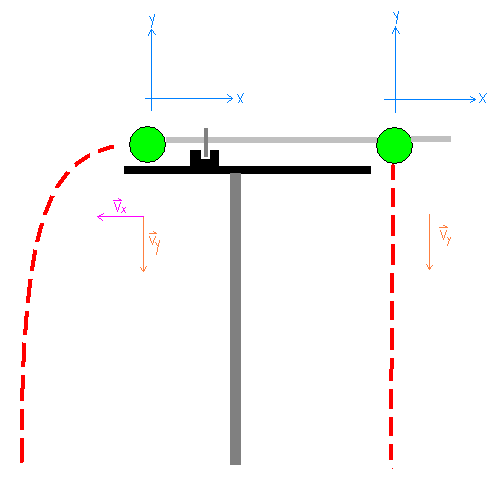Two balls in freewill, one vertically and one show horizontally to the side. Which lands first?
Watch The Video:
Teachable Topics:
- Acceleration due to gravity
- Vector components of motion
- Newton's Laws
Theory:
Projectile motion is part of everyday life. If your pencil rolls off of your desk, it follows a certain trajectory that curves down towards the ground. Separating projectile problems into x and y components, vertical and horizontal, makes them significantly easier to understand. For this demonstration, the question "Which ball hits the ground first?" is asked. If you know to separate the problem into x and y components, this question becomes easy because the x and y components of the velocity are independant of each other.
Since this x-component has nothing to do with the y-component, when we look at only the y-components, both balls have an initial vertical velocity of zero, and they both have the same vertical distance to fall, so they MUST hit the ground at the same time.
The apparatus has a spring loaded shaft (see diagram below) . On the right side side, the shaft holds a small metal sphere through a hole drilled through it. On the left, another metal ball is placed next to the end of the shaft. When released, the shaft moves very quickly to the left, releasing the ball on the right to fall straight down. Almost simultaneously, the shaft "punches" the left sphere outwards with a significant horizontal initial velocity.

Apparatus:
- Simultaneous free fall apparatus
- Two balls (One solid, one with a hole through the middle)
Procedure:
- Set the first ball up so the rod will hit it and launch it off the platform.
- Set the second ball up so it will drop directly as the rod is pulled out.
- Flick the arm up and watch as the balls hit the ground at the same time.



